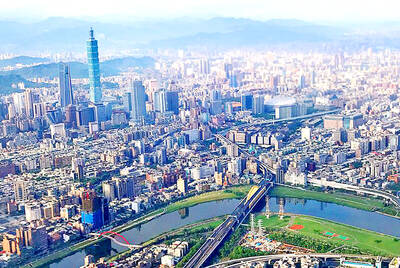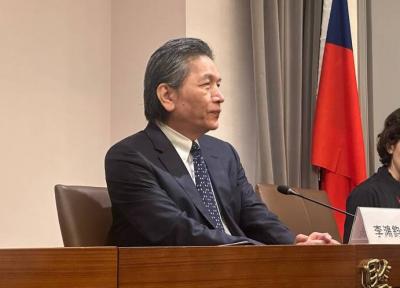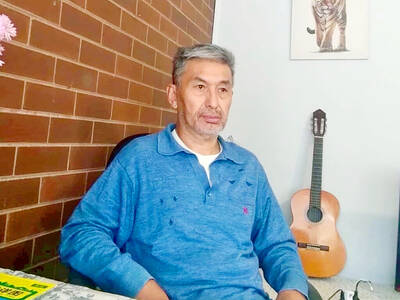The air force is looking forward to flying President Chen Shui-bian (
"Transporting passengers safely is the only aim of the Air Force's charter flight fleet. We [our personnel and our aircraft] are always ready for all kinds of missions upon receiving orders from our superior officers," said Colonel Chen Du-yung (
The current "Air Force One," a Boeing 737-800, which the president will take today, was purchased in 2000 and a "C-check," the strictest safety check for jetliners, was performed and completed in April.
The aircraft was also repainted as a "C-check" requires the removal of paint for a complete examination of the aircraft's structure.
Two "winglets," which can be seen on Boeing 747-400s' wing tips, were also installed to help save fuel.
Prior to today's flight to Palau, the aircraft has never been on a mission to a foreign country.
The Presidential Office said that state-of-the-art navigation, radar and communication systems had been installed to enable the president to keep in contact with the country's national security and warfare systems and give orders whenever necessary.
There are a total of three cabins onboard. In addition to the presidential seats, there is also a business class area for the heads of government and an economy class section for members of the president's staff and presidential guards.
The Presidential Office said that there are only four seats in the presidential section, and that Chen usually sits in the left rear one. The aircraft carries 116 passengers in total, including six cabin crew.
Chen Du-yung said the aircraft is not actually called "Air Force One" but should be called an "administrative charter aircraft," and belongs to the Air Force's charter flight fleet. Its mission is to transport the president, the vice president and other heads of government.
The fleet was established in Nanjing, China, on Dec. 1, 1946 and was relocated to Taiwan in 1948 as the Chinese Nationalist Party (KMT) Government were losing ground to the Chinese communist forces.
Former US president Harry S. Truman presented the late president and dictator Chiang Kai-shek (蔣介石) with a Douglas C-47 Skytrain and Chiang made it the first "Air Force One."
Chiang and his wife then used this aircraft for a visit to the Philippines in 1949. That was also the first time that "Air Force One" had flown abroad, but Chiang was not the president at the time.
At the time, the fleet belonged to the Presidential Office instead of the Air Force Command Headquarters. Whenever the fleet was carrying out a mission, the airport would be temporarily closed and secured by the military police and secret service agents.
On Dec. 5, 1971, the fleet purchased a Boeing 720, complete with a meeting room and a presidential bedroom, from Northwestern Airlines to replace the C-47, and it began service in 1972. The Boeing 720 was retired on Sept. 27, 1991 with an honorable "zero defect" record.
In 1981, in addition to the Boeing 720, the fleet also accepted a donation of four Boeing 727-100s from China Airlines. The fleet also purchased three Dutch Fokker-50 propeller aircraft, which are used mainly by the premier.
Chen Du-yung said that prior to the purchase of the 737-800, the Air Force once leased a Boeing 737-400 from China Airlines.

Taipei has once again made it to the top 100 in Oxford Economics’ Global Cities Index 2025 report, moving up five places from last year to 60. The annual index, which was published last month, evaluated 1,000 of the most populated metropolises based on five indices — economics, human capital, quality of life, environment and governance. New York maintained its top spot this year, placing first in the economics index thanks to the strength of its vibrant financial industry and economic stability. Taipei ranked 263rd in economics, 44th in human capital, 15th in quality of life, 284th for environment and 75th in governance,

The Sports Administration yesterday demanded an apology from the national table tennis association for barring 17-year-old Yeh Yi-tian (葉伊恬) from competing in the upcoming World Table Tennis (WTT) United States Smash tournament in Las Vegas this July. The sports agency said in a statement that the Chinese Taipei Table Tennis Association (CTTTA) must explain to the public why it withdrew Yeh from the WTT tournament in Las Vegas. The sports agency said it contacted the association to express its disapproval of the decision-making process after receiving a complaint from Yeh’s coach, Chuang

Control Yuan Secretary-General Lee Chun-yi (李俊俋) tendered his resignation last night, admitting that he had misused a government vehicle, as reported by media. His resignation was immediately accepted by the Control Yuan. In a statement explaining why he had resigned, Lee apologized for using a Control Yuan vehicle to transport his dog to a pet grooming salon on May 20. The issue first came to light late last month, when TVBS News reported that Lee had instructed his driver to take the dog to the salon. The news channel broadcast photos that it said were taken by an unnamed whistle-blower, which purportedly showed the

A former officer in China’s People’s Liberation Army (PLA) who witnessed the aftermath of the 1989 Tiananmen Square massacre has warned that Taiwan could face a similar fate if China attempts to unify the country by force. Li Xiaoming (李曉明), who was deployed to Beijing as a junior officer during the crackdown, said Taiwanese people should study the massacre carefully, because it offers a glimpse of what Beijing is willing to do to suppress dissent. “What happened in Tiananmen Square could happen in Taiwan too,” Li told CNA in a May 22 interview, ahead of the massacre’s 36th anniversary. “If Taiwanese students or